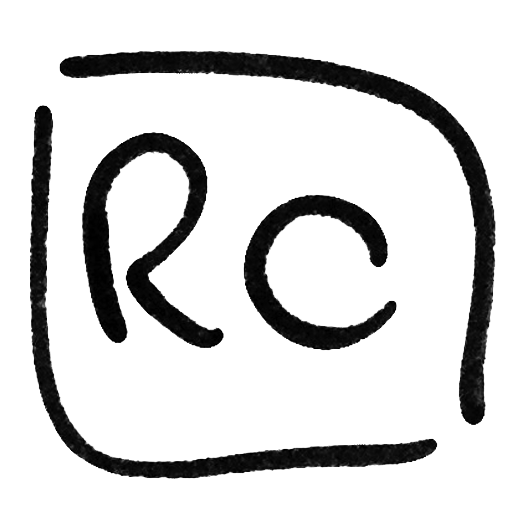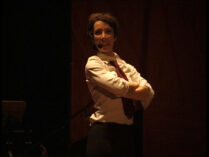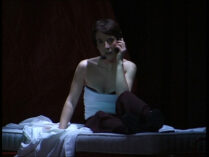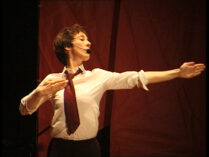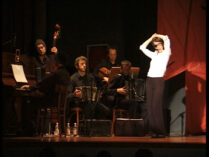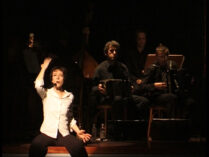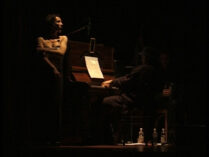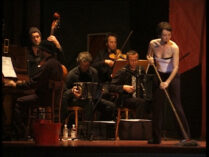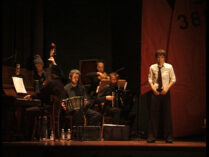BuenosAires-Itaca M3856
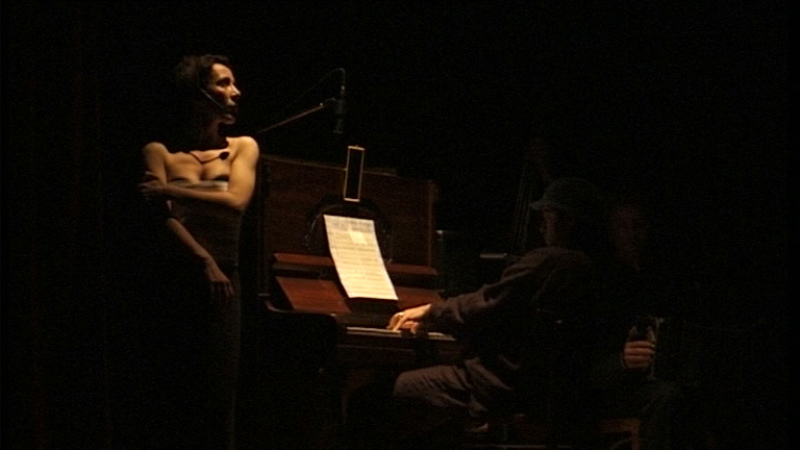
a collage and a one-woman-show by and with Roberta Cortese
with Davide Livermore (off voice)
and with th Union Bar: Sandy Lopicic (piano), Kurt Bauer (violin / viola d’amore a chiavi), Sasenko Prolic (contrabbass / guitar), Josef Fürpaß (bandoneon), Lothar Lässer (accordeon)
direction Davide Livermore
Premiere 11.04.2002 CineTeatro Baretti Torino, production Associazione Baretti
BuenosAires-Itaca-m-3856 is the story of Odysseus’ last journey that Homer tells us about: that of his return to Ithaca. It is retold here by Hermes, the messenger of the gods, who disguises himself as a captain (of a cruise? of a flight?) to reveal the feelings of Ulysses and Penelope. This following a journey and a wait that start and end along the rhythms and melodies of the Argentine tango.
But what does the tango have to do with Odysseus’ return to his homeland? Simply, underlying both, the same exasperation of different modes of nostalgia. The Odyssey is part of the tradition of the nòstoi, the poems that tell of the return journeys of the heroes who fought at Troy. Nòstos means, precisely, return. Consequently, since the suffix –algìa comes from the Greek àlgos, pain, the word nostalgia can take on a rather puzzling meaning: the ‘suffering from return’. And such it is in the Argentine tango, more specifically tango canciòn, in whose lyrics it is emphasized the bitterness of those who have left everything behind, who pine for memory and nostalgia, and then returning no longer recognize the things they had left behind.
Following the ‘mad flight’ of Odysseus, Roberta Cortese completes in turn her own little wandering journey between one character and another – Hermes, Ulysses, Calypso, Penelope – supported by her crew, the Austrian-Balkan formation of the Union Bar.
Note: “m3856” indicates a metaphorical flight number and it comes from the number of the Mirror dinghy’s sail hanging on stage
